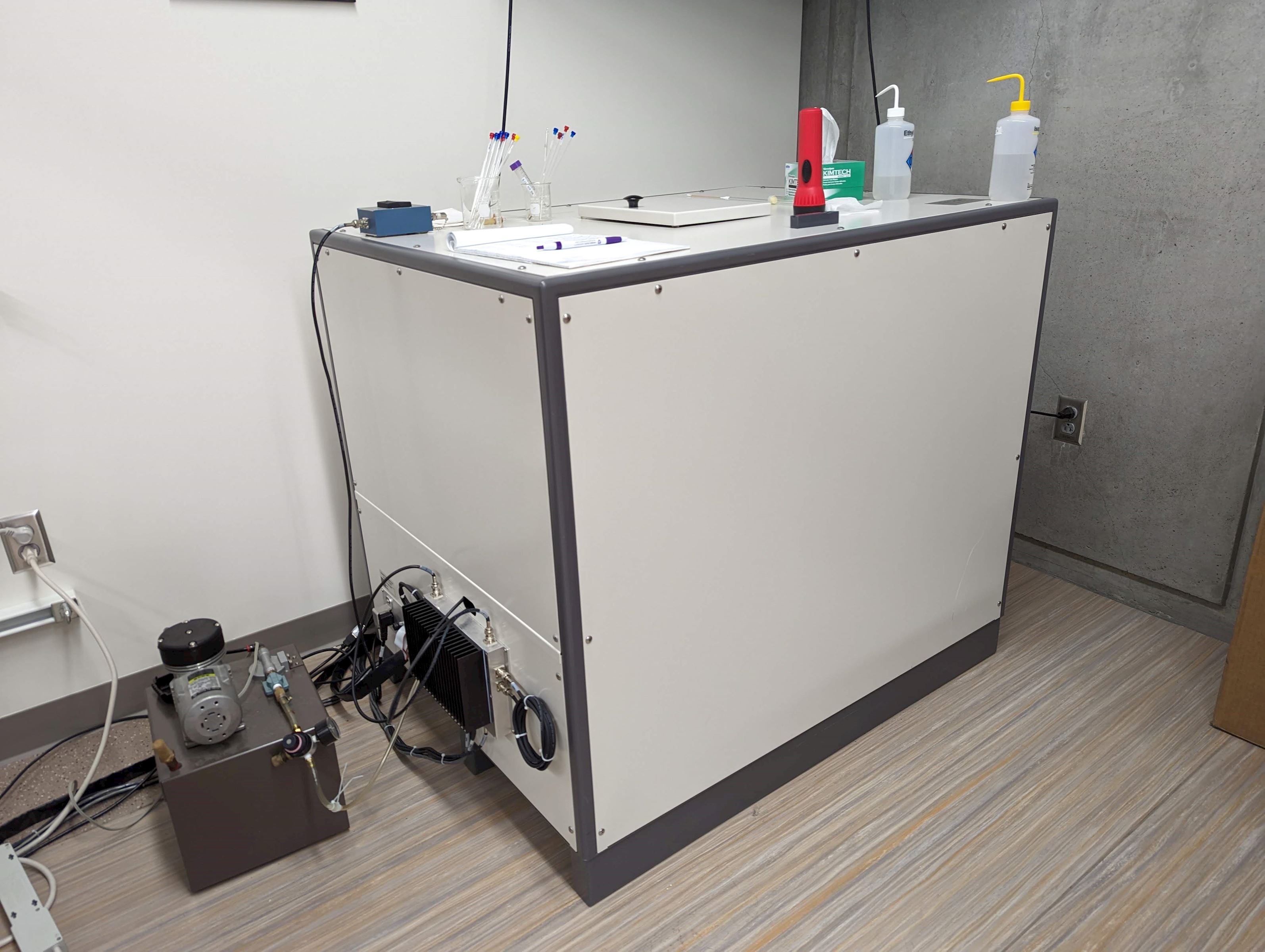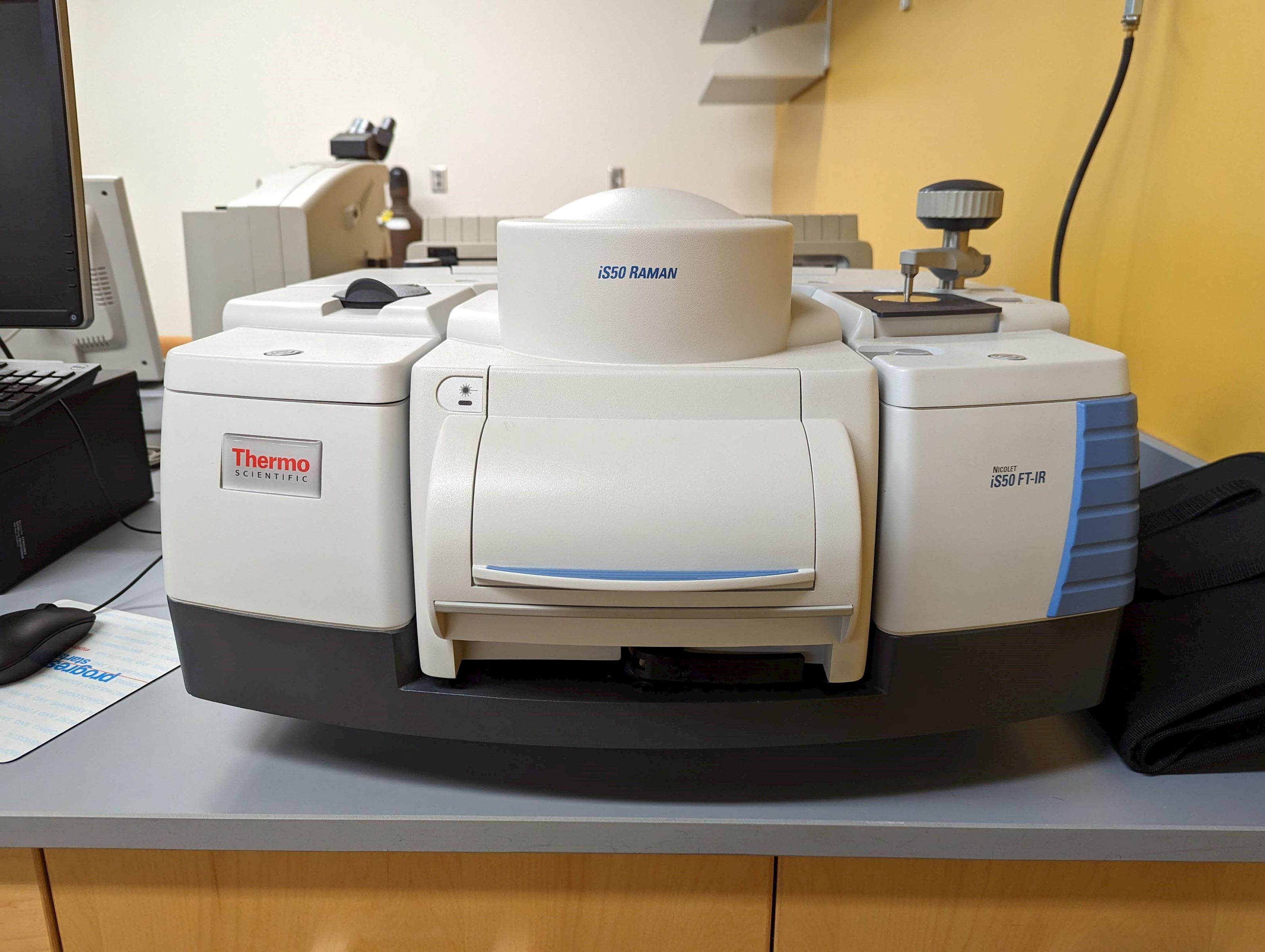Spectroscopy
Anasazi EFT-90 Nuclear Magnetic Resonance Spectrometer (NMR) [TY 254]
Nuclear Magnetic Resonance (NMR) is the most important experimental technique for the structural characterization of molecules. The technique is particularly important for structural studies of biologically-derived molecules (for example proteins, nucleic acids, and carbohydrates).
Low-field NMR spectroscopy provides structural information for routine organic and inorganic samples, such as those deriving from student syntheses. It is heavily used in graduate programs and in chemical and pharmaceutical industries.
Example Use Cases:
- Structural information of small molecules like pharmaceuticals
- Checking the outcomes of synthesis reactions
FTIR spectroscopy is an essential analytical technique in synthetic and analytical chemistry, where it is used to identify or characterize virtually any molecular compound. The principles of IR show that molecules vibrate and bonds stretch and bend when they absorb infrared radiation.
FTIR is used in organic synthesis, polymer science, petrochemical engineering, biological research, the pharmaceutical industry and analysis of food.
Raman scattering is sensitive to material phase, polymorphism and solid form, useful for discriminating between different crystalline states.
Example Use Cases:
- Quickly identify illegal drugs in forensic environment.
- Analyze thin films and coatings
- Distinguish different states of graphene and graphite

